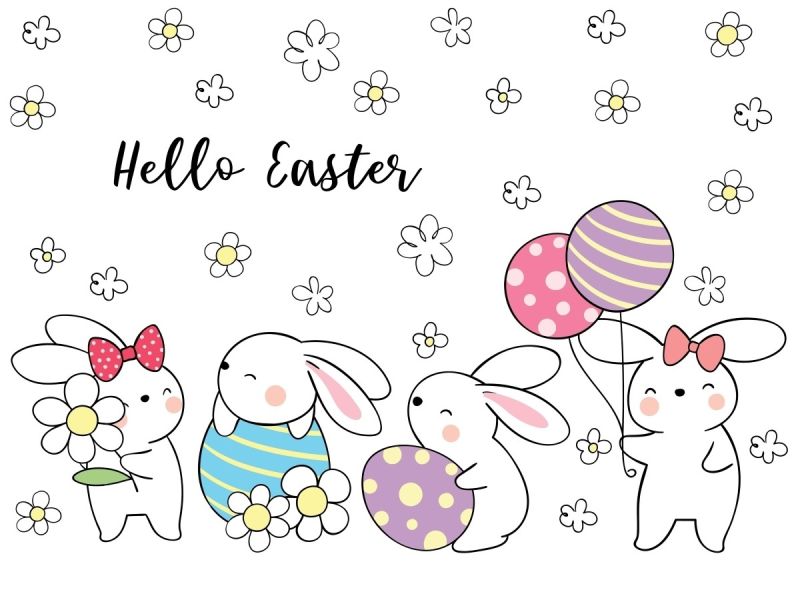Production News: Have A Happy Easter With These Egg-citing Facts & Traditional Games

We’ll be closing shortly for our Easter break. Before we go, we’d like to leave you with some of our favourite facts about Easter and some amazing activities to keep your chicks, kits, and lambs occupied this Easter.
Our Favourite Egg-citing Facts About Easter!
We’ve had an Easter hunt for our favourite facts about Easter. Did you know that:
Easter falls on different days because it follows a lunar calendar (based on the moon).
Easter is the FIRST SUNDAY after the FIRST FULL MOON after the SPRING EQUINOX (around 21st March). So, Easter can take place anywhere between 22nd March and 25th April.
Our name for Easter comes from an old Germanic word (austron) meaning dawn.
It may refer to a goddess of fertility, spring, and sunrise called Eostre or Ostara whose festival day was the Spring Equinox. She had a pet bird that she turned into a rabbit that laid colourful eggs.
In many countries, Easter’s name comes from the Hebrew word Pesach, referring to the Jewish holiday of Passover, like Paques (France), Pascua (Spain), Pasqua (Italy), Pashke (Albania), Pascha (Greece), Paaske (Norway), Pasen (Holland), and Pask (Sweden).
Easter eggs began as ancient symbols for life, death, re-birth, and fertility.
Ancient cultures associated eggs with death and re-birth. Ostrich eggs and gold and silver models have been found in ancient Sumerian and Egyptian graves. Later cultures associated eggs with fertility and new life with decorated eggs exchanged as gifts at spring festivals.
Early Christians may have stained eggs red to symbolise the crucifixion. This became an official symbol of the resurrection in the 17th century.
Eggs could not be eaten during Lent but chickens didn’t stop laying, which left a plentiful supply for Easter. Duck and chicken eggs were painted or dyed, then used as gifts, decorations, or for games.
Chocolate eggs didn’t appear until the 19th century. In Britain, J.S. Fry & Sons made the first Easter egg in 1873; Cadbury’s followed suit two years later.
Rabbits are also ancient symbols but the Easter Bunny probably comes from German folklore.
Ancient cultures associated rabbits with fertility and spring because they have multiple litters of 4-6 kittens each year. Some believed hares self-fertilised (linking to the Virgin Mary), while others associated them with death and rebirth (linking to the resurrection).
Many sacred sites around the world depict the three hares symbol of three hares chasing each other in a circle. The original meaning is unknown but it has since become associated with the Holy Trinity.
In German tradition, the Osterhase (Easter Hare) visited children’s homes to judge if they had been good or bad. Children made nests out of twigs and branches but only good children would find them filled with brightly decorated eggs (or sweets and toys). German immigrants took this tradition to America in the 1700s. As America had more rabbits than hares, the Easter Hare became the Easter Bunny. Children used hats, bonnets, or paper boxes to make nests – today, Easter baskets are far more common.
Other figures from around the world include the Easter Fox, Easter Cuckoo, Easter Chick, Easter Rooster, Easter Stork, and Easter Bilby.
The first chocolate bunnies appeared in the 19th century. According to recent surveys, most people eat the ears first!
Our Favourite Easter Activities!
If you’re looking for some new Easter activities, why not try these traditional games:
- EGG ROLLING: roll decorated hard-boiled eggs down a hill or push them across a lawn with sticks or spoons. Alternatively, create an indoor obstacle course for players to navigate.
- EGG HUNT: set up a hunt for individual eggs or leave a trail of clues leading to a grand prize.
- EGG TAPPING: take turns trying to tap and crack your opponent’s hard-boiled egg.
- EGG DANCING: dance between eggs on the floor without breaking them (blindfolded if you're feeling daring!). For less mess, use protective sheets OR decorative eggs.
- EGG THROWING: there are various throwing challenges including: throwing hard-boil eggs as far as possible without breaking them, throwing eggs so they spin for as long as possible when they land, and throwing an egg (traditionally raw) between two players and taking a step apart after each successful throw. For smaller spaces, try contained challenges like throwing eggs at a target (like a bowl or box).
You could also try your hand at our Easter Colouring Sheets:
Download as many sheets as you like, grab your colouring kits, and get colouring! When you’re done, why not share your stuff on social media and challenge friends and family to do their own.
You can download these sheets from our Activities Page under the “Prizes & Fun” tab in our menu bar.
Despatch & Delivery Over Easter 2022
We will be closing at 5pm today (Thursday 17th April) and will re-open at 9am on Monday 28th April.
Our last print run will take place today at 3pm. We will print and post any orders placed after this time on Monday 28th April.
We use Royal Mail's first class post as standard and allow seven working days for delivery. If your order is urgent, you can order by phone to upgrade to special delivery.
